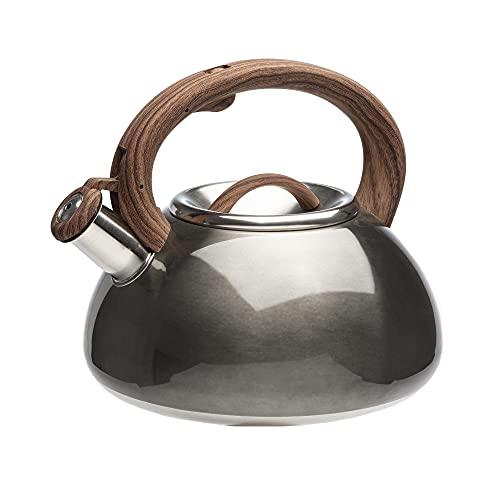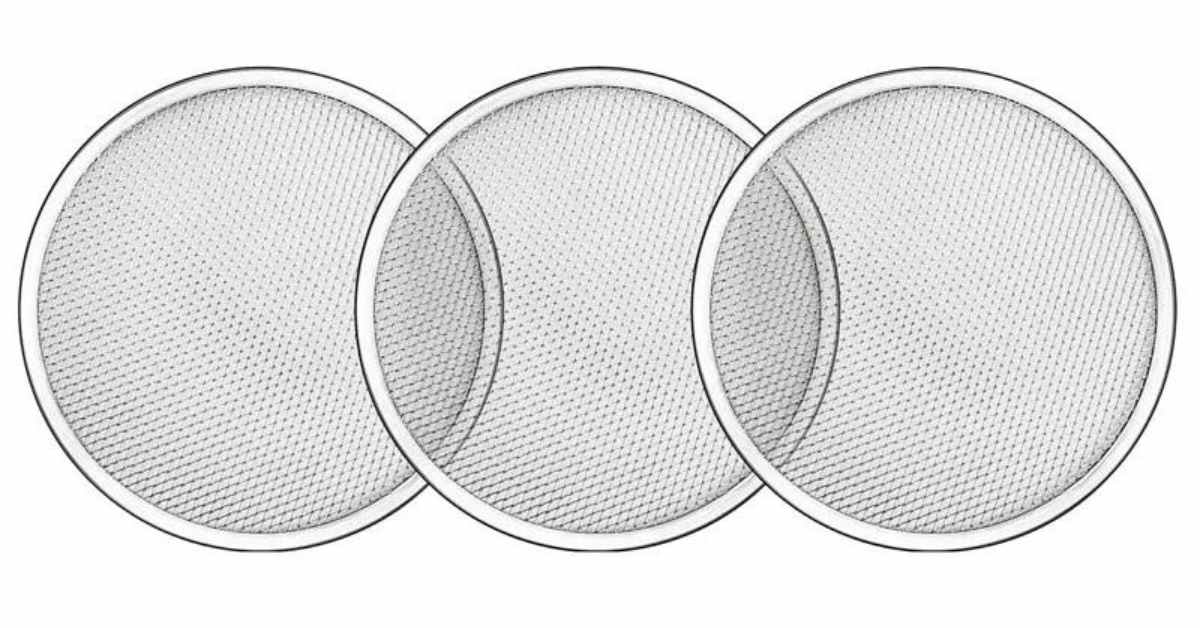To season your wok, first clean it thoroughly with hot water and mild detergent. Then, dry it completely and rub a thin layer of high-smoke-point oil all over the surface using a paper towel.
Heat the wok over high heat until it starts to smoke, then remove it from the heat and let it cool. Repeat this process 2-3 times to fully season your wok and create a non-stick surface. With proper care and use, your wok will develop a natural patina over time, enhancing its cooking performance.
Introducing the right seasoning to your wok is essential for optimal cooking performance and for creating a non-stick surface. In this guide, we will provide you with simple step-by-step instructions on how to season your wok.
By following these guidelines, you can ensure that your wok becomes your go-to cooking tool, delivering delicious stir-fries and other Asian-inspired dishes with ease. So, let’s dive in and discover the secrets to seasoning your wok like a pro.
Table of Contents
ToggleIntroduction To Seasoning A Wok
What is seasoning?
Seasoning is a process that involves treating your wok with oil to create a protective and non-stick surface. It is a crucial step in maintaining and enhancing the performance of your wok, ensuring that it lasts for a long time.
Seasoning not only prevents food from sticking to the surface but also adds flavor to your dishes. This important technique is widely used in Asian cooking and is a must for anyone who wants to master the art of stir-frying.
Importance of seasoning for a wok
Seasoning your wok is essential for several reasons. Firstly, it helps to create a non-stick surface, which makes it easier to cook and stir-fry various types of ingredients. Secondly, it prevents food from sticking to the surface, reducing the need for excessive oil and making your dishes healthier.
Additionally, seasoning helps to prevent rust and corrosion, thus extending the lifespan of your wok. Lastly, seasoning adds flavor to your cooking, giving your dishes an authentic taste and enhancing the overall dining experience.
How seasoning creates a non-stick surface
When you season a wok, you are essentially creating a layer of polymerized oil on its surface. This layer acts as a natural non-stick coating, making it easier to cook and clean your wok.
The high heat used during the seasoning process causes the oil to bond with the metal, creating a durable and smooth surface that prevents food from sticking. The more you season your wok, the better the non-stick performance becomes.
During the seasoning process, the oil penetrates the pores of the wok, filling any imperfections and creating a protective barrier. This barrier prevents moisture from coming into direct contact with the metal, reducing the risk of rust and corrosion. It also helps to retain heat more efficiently, allowing for even cooking and better heat distribution.
Cleaning A New Wok
How to clean a new wok before seasoning
Before you start seasoning your new wok, it’s important to first clean it properly. Most new woks come with a protective coating to prevent rust during transportation and storage. This coating needs to be removed before you can season your wok and start cooking delicious meals. Here’s how to clean a new wok before seasoning:
- Step 1: Wash the wok with warm, soapy water to remove any dirt or debris from the surface.
- Step 2: Scrub the wok with a scouring pad or steel wool to remove the protective coating. Make sure to scrub all areas of the wok, including the sides and bottom.
- Step 3: Rinse the wok thoroughly to remove any soap residue.
- Step 4: Dry the wok completely with a clean towel or by placing it on a low-heat stovetop burner for a few minutes.
Once your new wok is clean and dry, it’s ready to be seasoned. Seasoning your wok will not only prevent rust but it will also help to create a non-stick surface for cooking. Follow our guide on how to season your wok for the best results.
Seasoning Process For Different Types Of Woks
Seasoning a carbon steel wok
Seasoning a carbon steel wok is essential to create a natural, non-stick surface that enhances the cooking experience. Here’s a step-by-step process to season your carbon steel wok:
- Start by thoroughly cleaning the wok with warm water and a mild detergent.
- After cleaning, dry the wok completely to prevent rust formation.
- Next, apply a thin layer of high smoke points oil, such as vegetable or canola oil, on the interior surface of the wok.
- Heat the wok over high heat until it starts to smoke.
- Continue heating the wok for about 10 minutes, ensuring the entire surface is heated and the oil gets polymerized.
- Allow the wok to cool down naturally.
- Repeat this process 2-3 times to develop a non-stick patina.
Seasoning a cast iron wok
Seasoning a cast iron wok helps to create a smooth and non-stick cooking surface. Follow these steps to season your cast iron wok:
- Begin by cleaning the wok with warm water and a mild detergent.
- Rinse the wok thoroughly and dry it completely.
- Apply a thin layer of vegetable or flaxseed oil to the interior and exterior of the wok.
- Heat the wok in the oven at 375°F (190°C) for one hour.
- After the hour has passed, turn off the oven and allow the wok to cool down completely.
- Repeat this process 2-3 times to create a well-seasoned cast iron wok.
Seasoning a stainless steel wok
Seasoning a stainless steel wok is slightly different from seasoning other types of woks. Here’s how to season your stainless steel wok:
- Start by washing the wok with warm, soapy water and thoroughly dry it.
- Apply a thin layer of high smoke point oil, like vegetable or grapeseed oil, to the interior of the wok.
- Heat the wok over medium heat until the oil starts to smoke.
- Remove the wok from the heat and allow it to cool down.
- Repeat this process 2-3 times to develop a seasoned surface on your stainless steel wok.
Seasoning a non-stick wok
While non-stick woks don’t require traditional seasoning, it is still important to properly care for them. Here are some tips for maintaining a non-stick wok:
- Always use wooden or silicone utensils to prevent scratching the non-stick coating.
- Clean the wok with gentle dish soap and a soft sponge or cloth.
- Avoid using abrasive cleaning tools, as they can damage the non-stick surface.
- After washing, dry the wok completely to prevent moisture buildup.
- Store the wok in a cool and dry place to maintain its non-stick properties.
Step-By-Step Guide To Seasoning A Wok
Seasoning a wok is an essential step before using it for cooking. This process not only creates a non-stick surface but also helps to prevent rust and improve the overall heat distribution of the wok. Follow this step-by-step guide to properly season your wok and enhance your cooking experience.
Preparing the wok for seasoning
Before you start seasoning your wok, it’s important to thoroughly clean it. Remove any stickers, oil, or other coatings applied by the manufacturer. Use warm water, a gentle dish soap, and a scrub brush to clean the wok. Rinse it thoroughly and dry it completely using a clean cloth or paper towel.
Applying oil to the wok
Once the wok is clean and dry, it’s time to apply oil. Choose a high smoke point oil such as vegetable oil, canola oil, or peanut oil. Using a paper towel or a brush, evenly coat the entire interior surface of the wok with a thin layer of oil. Make sure to cover all the surfaces, including the sides and the bottom.
Heating the wok to create a seasoned layer
Next, place the oiled wok on a stove over medium-high heat. Allow the wok to heat up gradually until the oil starts to smoke. This process helps to bond the oil to the wok’s surface and create a seasoned layer. Rotate the wok gently to ensure that the heat is evenly distributed.
Repeating the seasoning process if necessary
Once the oil starts smoking, remove the wok from the heat and let it cool down. Check the wok’s surface for any inconsistencies or areas that are not properly seasoned. If necessary, repeat the seasoning process, starting with applying oil and heating the wok again. Multiple seasoning layers may be required to achieve the desired non-stick surface.
Congratulations! You have successfully seasoned your wok. Now, it’s ready to be used for your favorite stir-fry dishes and more. Remember to properly clean and maintain your seasoned wok to prolong its lifespan and enhance its performance.
Maintaining A Seasoned Wok
A seasoned wok not only enhances the flavor and aroma of your stir-fried dishes but also provides a non-stick surface for easy cooking and cleaning. However, to ensure that your wok maintains its seasoned surface and stays rust-free, proper care and maintenance are essential.
In this section, we will discuss the proper care and cleaning of a seasoned wok, how to prevent rusting and provide tips for using and storing your seasoned wok.
Proper care and cleaning of a seasoned wok
When it comes to caring for your seasoned wok, it’s essential to follow a few simple steps to ensure its longevity and performance. Here’s how you can properly care for and clean your seasoned wok:
- After each use, gently wash your wok with warm water and a soft sponge or brush. Avoid using harsh abrasives or metal scouring pads, as they can damage the seasoned surface.
- Dry your wok thoroughly with a clean towel to prevent moisture from causing rust.
- If food particles are stuck to the wok, you can use a small amount of dish soap, but make sure to rinse it thoroughly afterward to remove any residue.
- Never soak your wok in water for an extended period, as it can strip away the seasoning. Instead, clean it immediately after use.
- To remove stubborn stains or stuck-on food, you can use a paste made of baking soda and water. Apply the paste to the affected area, let it sit for a few minutes, and then gently scrub it off.
How to prevent rusting and maintain the non-stick surface
To maintain the non-stick surface of your seasoned wok and prevent rusting, follow these tips:
- After washing, make sure to thoroughly dry your wok to remove any moisture. You can even place it on the stovetop on low heat to evaporate any remaining water.
- Apply a thin layer of cooking oil to your wok after each use. This helps to maintain the seasoning and prevent rusting.
- Avoid using acidic ingredients or cooking techniques that require prolonged exposure to high heat, as they can strip away the seasoning and cause rust. Instead, use a stainless steel or wooden utensil to stir and toss your ingredients.
- If you notice any signs of rust, you can remove it by gently scrubbing the affected area with steel wool or a scouring pad. Afterward, re-season your wok to restore its non-stick surface.
Tips for using and storing a seasoned wok
Here are some tips to help you use and store your seasoned wok effectively:
- Before using your newly seasoned wok, heat it over medium-high heat for a few minutes to ensure that the seasoning is properly set.
- Avoid using metal utensils that can scratch the seasoned surface. Instead, use wooden or silicone utensils to protect the seasoning.
- After each use, gently wash and dry your wok before storing it. Ensure that there is no moisture present, as it can lead to rusting.
- To store your seasoned wok, you can place a paper towel or cloth between each wok if you stack them. This prevents any potential scratching or damage to the seasoned surface.
- If you have a hanging rack, storing your wok vertically can help prevent any moisture from accumulating at the bottom.
By following these tips for caring, cleaning, and maintaining your seasoned wok, you can ensure its longevity, continue enjoying its non-stick properties, and create delicious stir-fried dishes for years to come.
Frequently Asked Questions For How To Season Your Wok
How Do You Season A Wok Step By Step?
To season a wok step by step, follow these instructions:
1. Clean the wok thoroughly.
2. Heat the wok over medium-high heat until it becomes hot.
3. Add a thin layer of cooking oil to the wok and spread it evenly.
4. Heat the oil in the wok until it starts to smoke.
5. Remove the wok from the heat and let it cool completely.
6. Use a paper towel to wipe off any excess oil.
7. Repeat steps 3-6 two or three more times to build up the seasoning.
8. Once the wok is seasoned, it is ready for use.
Do You Have To Season A Wok Before Use?
Yes, you need to season a wok before use. Seasoning the wok creates a natural non-stick surface over time.
Do You Need Oil To Season A Wok?
Yes, you need oil to season a wok. Seasoning involves oiling and heating the wok to develop a non-stick surface.
Conclusion
Seasoning your wok is an essential step to enhance its performance and increase its lifespan. By following the proper steps, you can create a natural, non-stick surface on your wok, making it easier to cook with and clean. Start by thoroughly cleaning the wok and removing any protective coatings.
Then, heat the wok and apply a thin layer of oil, ensuring that it evenly coats the surface. Allow the oil to heat until it starts smoking, and then remove the wok from the heat. Use a paper towel to gently spread the oil and remove any excess.
Repeat this process multiple times to build up a seasoned patina. With regular use and proper maintenance, your wok will continue to improve over time. So why wait? Grab your wok and start seasoning it today to enjoy delicious, perfectly cooked meals!






